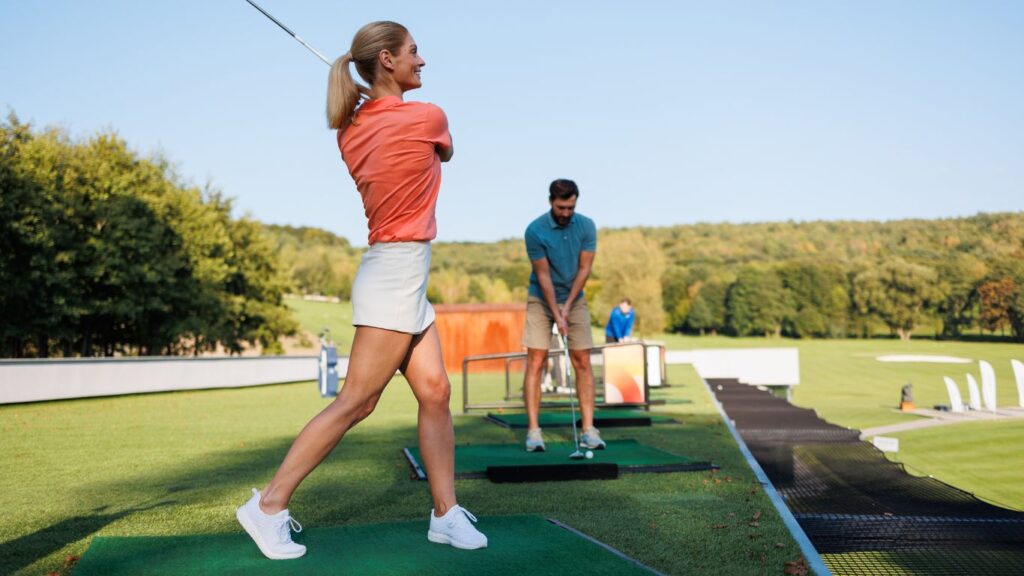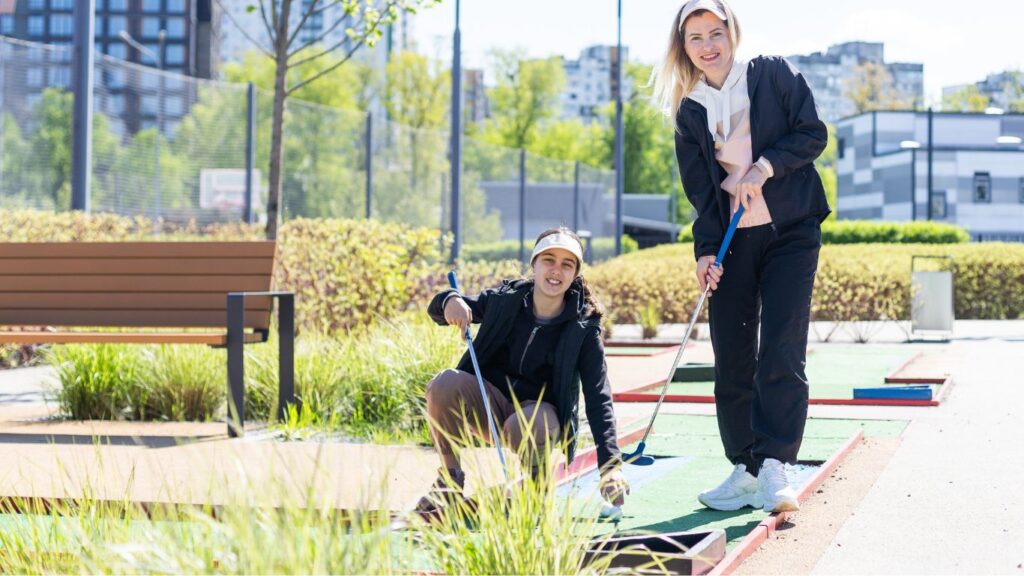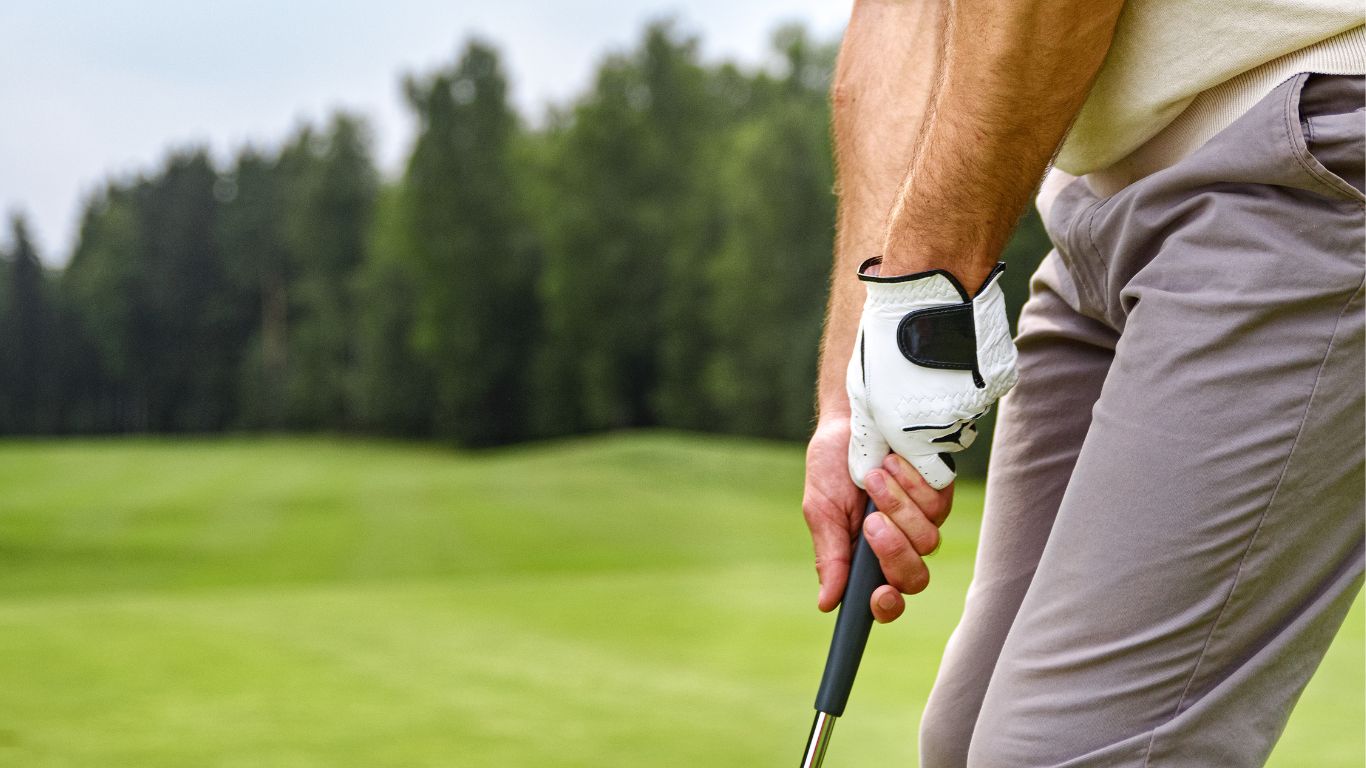Welcome to our guide on improving your golf swing fundamentals. Whether you’re just starting or looking to refine your skills, mastering the basics of grip and swing mechanics is essential. Let’s get started!
Grip Basics
The Vardon Grip
The Vardon grip, or the overlapping grip, is one of the most common grips golfers use. Here’s how to master it:

- Position Your Hands: Place your left hand (for right-handed golfers) on the Club first. The Club should sit diagonally across your fingers, not in the palm. Your thumb should run down the centre of the Club.
- Add Your Right Hand: Position your right hand so that the pinky finger overlaps the space between the index and middle finger of your left hand. Your right thumb should sit slightly to the left of the centre on the Club.
- Firm but Relaxed Grip: Imagine shaking hands with someone—not too strong or weak. Maintain a firm, but not tight, grip to avoid tension in your arms and shoulders.
Common Mistakes
- Gripping Too Tightly: Creates tension and restricts fluid motion.
- Incorrect Hand Positioning: This can cause the clubface to be misaligned at impact.
- Inconsistent Grip Pressure: Leads to loss of control and consistency.
- Holding the Club in the Palm: Reduces control and makes it harder to square the clubface at impact.
Practice Drills

- The “Waggle” Drill:
- Practice a slight, continuous waggle of the Club before initiating your swing.
- This helps you find your natural grip pressure and relax your hands.
- One-Handed Swings:
- Alternate between hitting balls with just the left hand and just the right hand.
- Ensures both hands contribute equally to the swing.
Swing Mechanics
One-Piece Takeaway
A smooth takeaway sets the stage for a powerful, accurate swing. Focus on moving the Club, arms, and body together in one piece until the Club is parallel to the ground.
Common Mistakes
- Swinging with a Wristy Motion Leads to loss of power and accuracy.
- Over-rotating hips and Shoulders: Causes loss of balance.
- Incorrect Backswing Path: Results in misaligned shots.
Practice Drills
- Split Grip Drill:
- Grip the Club with your left hand at the top of the grip and your right at the bottom.
- This drill helps you feel the connection between the arms and body during the swing.
- Alignment Stick Drill:
- Place an alignment stick in the ground parallel to the target line.
- Practice swinging without hitting it to ensure proper club path and body alignment.
FAQs
What is the best way to improve my golf swing?
Improving your golf swing starts with mastering the fundamentals. Focus on developing a proper grip, a smooth one-piece takeaway, and consistent swing mechanics. Regularly practising targeted drills like the “Waggle” and Split Grip will enhance your skills. Don’t hesitate to seek advice from a golf professional for personalized tips and feedback.

How can I avoid common swing mistakes?
To avoid common swing mistakes, maintain a relaxed yet firm grip and ensure your hands are correctly positioned on the Club. Practice drills like the One-Handed Swings and the Alignment Stick Drill will help you develop a balanced, controlled swing. Regularly evaluating your swing and incorporating feedback will prevent ingrained errors.
How often should I practice to see improvement?
Consistency is critical to improvement in golf. Aim to practice a few times weekly, focusing on your swing mechanics and short games. Quality practice sessions, where you concentrate on specific aspects of your game, will yield better results than longer, less focused sessions.
Should I take golf lessons as a beginner?
Taking golf lessons as a beginner can be highly beneficial. A qualified instructor can help you solidify the basics, correct early mistakes, and provide a structured learning path. Lessons can accelerate your progress and help build a strong foundation for your game.
What equipment do I need to get started?
As a beginner, you don’t need the most expensive equipment. A basic set of clubs, including a driver, a couple of irons, a wedge, and a putter, is sufficient. Comfortable golf shoes and appropriate attire are also important. As you progress, you can invest in specialized equipment based on your skill level and preferences.
How can I practice golf at home?
If done correctly, practising golf at home can be effective. You can work on your grip and swing mechanics in a confined space or set up a putting area to practice your short game. Training aids like alignment sticks or weighted clubs can also be beneficial. Consider getting a net or mat to practice full swings indoors or in your backyard.
Conclusion
Focusing on grip and swing mechanics fundamentals will set you up for success on the golf course. Remember, practice makes perfect. Consistently working on these drills will improve your control, power, and accuracy.
Ready to take your game to the next level? Join our community of golf enthusiasts and get personalized tips from our experts.










